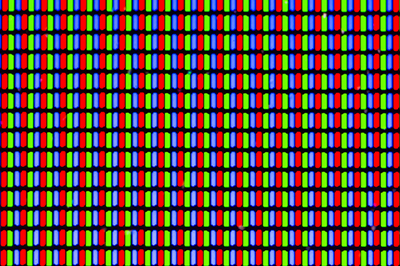What is the Display Interface 'OpenLDI' in Automotive Display Systems?
Main Types of Automotive Display
Instrument Cluster (Meter Display)
Displays information such as speed, fuel level, and engine temperature. It has evolved from traditional analog displays to digital displays using TN or STN LCDs, and now to graphical displays using TFT LCDs.
Center Information Display (CID):
Used to operate navigation, media, air conditioning, etc. It supports touchscreens and voice control, serving as the central user interface.
Head-Up Display (HUD):
Projects information onto the windshield, minimizing eye movement and enhancing safety. Recently, AR (Augmented Reality) HUDs and PHUDs have also emerged.


What is Display Interface?
In automotive display systems, display interface is a communication standard used to transmit video signals between the SoC (System on Chip) and the display, or between the SoC/display and SerDes (Serializer/Deserializer).
Representative Display Interfaces
OpenLDI (Open LVDS Display Interface):
- Based on LVDS (Low Voltage Differential Signaling). Offers high noise immunity and is suitable for long-distance transmission. Serial transmission reduces wiring complexity. Widely used in automotive displays and industrial/medical equipment.
eDP (Embedded DisplayPort):
- An embedded version of DisplayPort. Supports high bandwidth and resolution. Includes bidirectional communication and power-saving features. Used in laptops, tablets, and high-end vehicle displays.
HDMI (High-Definition Multimedia Interface):
- An embedded version of DisplayPort. Supports high bandwidth and resolution. Includes bidirectional communication and power-saving features. Used in laptops, tablets, and high-end vehicle displays.
MIPI-DSI (Mobile Industry Processor Interface - Display Serial Interface):
- Designed for mobile devices, offering high speed and low power consumption. Used in some automotive displays and smartphones.
What is OpenLDI?
Full Name: Open LVDS Display Interface
Physical Layer Technology: LVDS
Primary Use: Originally for PC monitors, now widely used in industrial and automotive systems.
Technical Features:
- High-bandwidth digital video transmission
- Based on FPD-Link
- Uses 36-pin MDR36 connectors
- High noise immunity and low power consumption

Difference Between OpenLDI and LVDS
LVDS: A physical layer communication method.
OpenLDI: A display interface standard based on LVDS.
Reasons for Confusion:
- Both support high-bandwidth digital video transmission.
- Similar connectors and cables.
- Ambiguous product documentation.
Practical Considerations:
Even if labeled 'LVDS-compatible', verify OpenLDI compliance due to potential differences in signal timing or pin layout.
Why OpenLDI is Used in Automotive Displays
Technical Advantages:
- High bandwidth and fast transmission
- Low EMI
- Excellent for long-distance transmission
Suitability for Automotive Use:
- Reliability and durability
- Compatibility with existing infrastructure
- Cost-effective
OpenLDI Specification Overview
- Physical Layer: LVDS
- Compatibility: High with FPD-Link
- Connector: 36-pin (e.g., MDR36)
- Signal Transmission: Digital video stream
- Supported Resolutions: SVGA to QXGA (up to 1920×1200 @ 60fps)
Role of OpenLDI in Integrated Cockpits
An integrated cockpit consolidates display and control functions into a single platform. When SoC and display are separate, they are connected via SerDes interfaces.
- SoC to Serializer: OpenLDI, MIPI-DSI, eDP
- Deserializer to Display: OpenLDI is most commonly used
LCD Displays with OpenLDI Interface
OpenLDI serializes data at up to 7x the pixel clock per channel. Higher resolutions require more bandwidth, often needing dual-channel configuration.
1ch (Single Channel):
- Max Resolution: Up to 1280×1024 or 1366×768
- Color Depth: 18-bit or 24-bit RGB
- Pixel Clock: Up to ~85 MHz
2ch (Dual Channel):
- Max Resolution: 1920×1080, 1920×1200, or 2048×1536
- Color Depth: 18-bit or 24-bit RGB
- Pixel Clock: Up to ~85 MHz

Epson's Automotive Display Controllers with OpenLDI
| Product Name | Application | Max Resolution | Key Features |
|---|---|---|---|
| S2D13V43 (In Development) | High-Resolution HUD |
2K | Local Dimming, Warping Correction, OSD, Safety Features |
| S2D13V42 | HUD | 1280×720 | Warping Correction, Safety Features, Pitch Correction |
| S2D13V40 | HUD | 800×600 | Warping Correction, |
| S2D13V02 | Warning Light Monitoring | 1920×720 | Display Error Detection |
| S2D13V52 | Scaler IC | 2880×1080 | High-Quality Scaling |
| S2D13V70 | Bridge IC (eDP -> OpenLDI) | 1920×1200 | Interface Conversion |
Documents related to Display Controller IC/Interface IC for Automotive
You can request the following documents related to Display Controller/Interface IC for Automotive. Please feel free to request.
